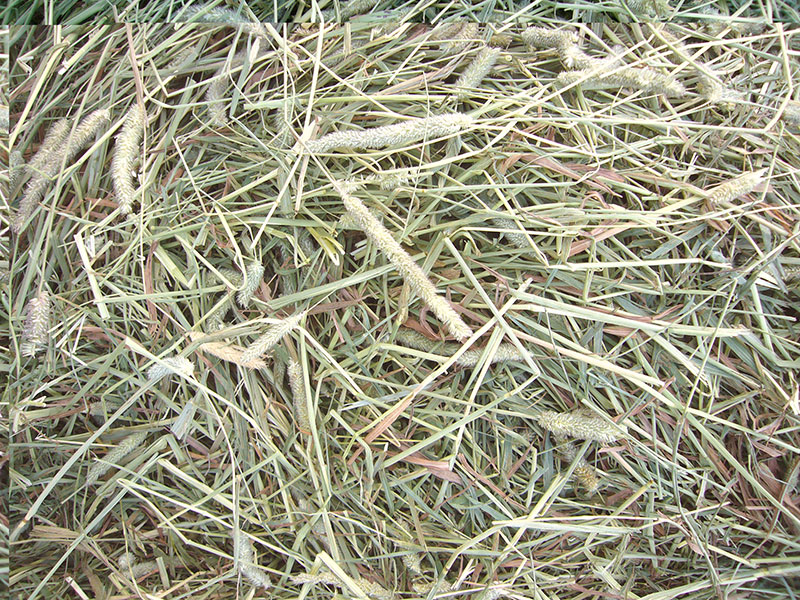History of Timothy Hay
Timothy hay, also referred to as Timothy-grass, is a grass native to Europe. It is also known as meadow cat’s tail and common cat’s tail and can be found in most of Europe, excluding the Mediterranean region.
The grass was introduced to North America by settlers in the early 18th century. It was first cataloged by a man named John Hurd, who has noticed it growing wild in New Hampshire and started feeding it to his livestock. He called it “Hurd grass”. In around 1720 a farmer named Timothy Hansen began cultivating it and promoting it commercially throughout the other states. It was around that time the grass got the name “Timothy Hay” and the name has stuck to this day.

Timothy Hay for Forage
Timothy Hay is most used as feed for cattle and horses. It is noted for its relatively low protein and high fibre content. It also contains low moisture which makes the dried grass ideal for storage without worrying about rotting.
Mature horses especially benefit from the low protein and high-quality nutritional content of Timothy hay as it allows them to eat without gaining extra calories or weight. These same dietary factors are beneficial for thoroughbred race horses. Timothy hay is easy on animals’ digestive systems and its high fibre content promotes regular bowel movements.
In many cases, horse owners and cattle producers will mix Timothy hay with other forages like alfalfa and red clover, especially if they feel their animals could benefit from the extra protein and calories offered by legume forages. Since Timothy hay has a low calcium content, it is ideal feed for domestic animals like rabbits and guinea pigs, which are may be more prone to developing bladder stones and crystallization of the urine. Many small animal vets recommend Timothy hay to avoid these problems.
Timothy Hay for Export

Timothy hay grows extremely well under Canada’s growing conditions and is in demand in countries along the Pacific Rim, specifically in Japan. It is used to add fibre to the diets of cattle, and as forage for horses in the Asian market. This huge export market has picked up substantially in Western Canada, with producers like Barr-Ag Hay & Grain Exporters working hard to keep up with the pace of the worlds expanding demand for Timothy hay.
According to Alberta Agriculture and Rural Development, export shipments from Canada’s western provinces have increased from a trial shipment of 17 tonnes in the early 1980s to over 300,000 tonnes in 2003-04. Out of that total, 80% of it is going to Japan making them Canada’s largest customer for Timothy hay.
Barr-Ag Timothy Hay
Grown near the eastern slopes of the Canadian Rocky Mountains, Barr-Ag’s Timothy hay is argued to be some of the most palatable hay in the world. We are fortunate to have clean air, rich soil and a pristine environment in which to grow our hay. Increased sugar content is the result of higher altitudes and our northern location, which makes for long, warm days and cool nights during the growing season.
Dryland Timothy hay is cut once per season, while irrigated Timothy is harvested 2 times per season. The majority of Barr-Ag’s Timothy hay is produced on our own farms and the rest we purchase from trusted producers who follow our growing protocols and adhere to our quality control standards.
Contact Barr-Ag for further information regarding grades currently available.
Sources: http://plants.usda.gov/factsheet/pdf/fs_phpr3.pdf; http://www1.agric.gov.ab.ca/$department/deptdocs.nsf/all/sis11075; http://www.therockdepotcolorado.com/artman/publish/printer_Timothy_Hay_Good_Hay_for_Horse_Feed.html



